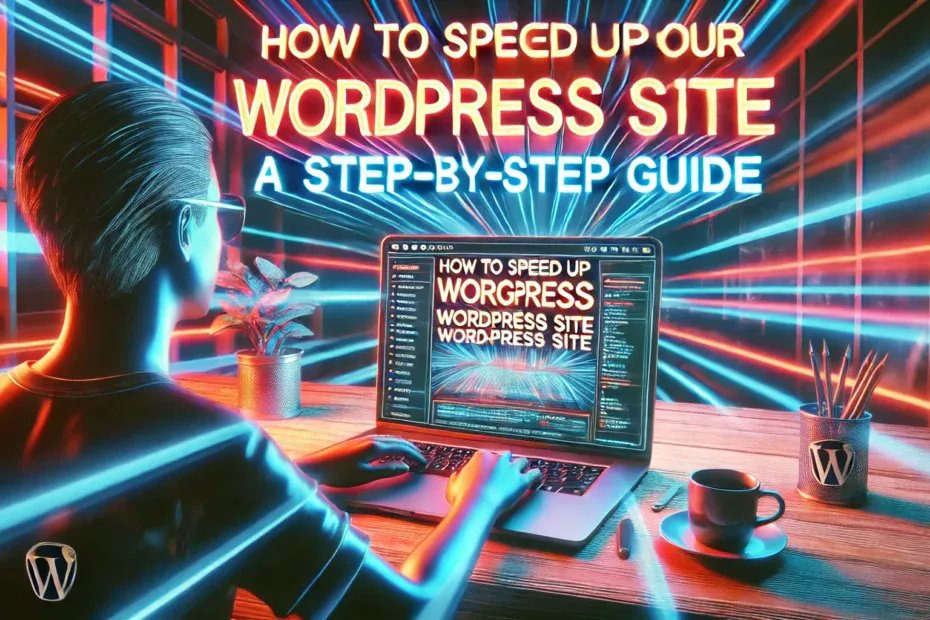A slow website is a traffic killer. In today’s fast-paced digital world, users expect web pages to load in two seconds or less. If your WordPress site lags, visitors will bounce, rankings will drop, and conversions will plummet.
The good news? You don’t need to be a tech expert to boost your site speed. This guide walks you through practical, step-by-step optimizations to make your WordPress site lightning-fast.
1. Test Your Site Speed
Before making changes, identify where your site stands.
Tools to Measure Performance:
- Google PageSpeed Insights – Provides recommendations for mobile and desktop
- GTmetrix – Analyzes speed and suggests fixes
- Pingdom – Tests load time from different locations
👉 Related: Fastest WordPress Themes
2. Choose a Fast and Reliable Hosting Provider
Your hosting service is the backbone of your website’s speed. A slow server equals a slow site.
What to Look for in a Hosting Provider:
- Fast servers optimized for WordPress
- Built-in caching and CDN support
- Scalability for traffic spikes
👉 Related: Hosting Finder Tool
3. Use a Lightweight WordPress Theme
Not all themes are created equal. Heavy themes with excessive code and animations can slow down your site.
Best Lightweight Themes for Speed:
- Neve – Fast and minimal
- GeneratePress – Optimized for performance
- Astra – Lightweight and highly customizable
👉 Related: Best WordPress Themes checker tool
4. Enable Caching
Caching stores a static version of your site, reducing server load and speeding up page delivery.
Best Caching Plugins:
- WP Rocket (Premium) – User-friendly and powerful
- W3 Total Cache (Free) – Advanced caching options
- LiteSpeed Cache (Best for LiteSpeed servers)
👉 Related: On-Page SEO Optimization Tool
5. Optimize Images
Uncompressed images can drastically slow down page load times.
How to Optimize Images:
- Use WebP format – Smaller file size, same quality
- Compress images – Use Smush or ShortPixel
- Enable lazy loading – Load images only when needed
👉 Related: Image Compressor
6. Minify CSS, JavaScript, and HTML
Minification removes unnecessary characters from your code, reducing file sizes.
How to Minify Your Site’s Code:
- Use WP Rocket – Has built-in minification
- Autoptimize – Great for CSS and JS optimization
- Asset CleanUp – Helps remove unnecessary scripts
👉 Related: CSS Minifier Tool
7. Utilize a Content Delivery Network (CDN)
A CDN stores copies of your website across multiple servers worldwide, ensuring faster load times regardless of user location.
Best CDN Services:
- Cloudflare – Free and premium options
- BunnyCDN – Affordable and efficient
- KeyCDN – Easy integration with WordPress
👉 Related: CDN Detection Tool
8. Limit WordPress Plugins
Too many plugins can increase load time and conflicts. Keep only essential ones.
Plugin Management Tips:
- Deactivate and delete unused plugins
- Choose well-coded, lightweight alternatives
- Regularly update active plugins
👉 Related:10 Must-Have WordPress Plugins
9. Reduce HTTP Requests
Each element on a page (CSS, JS, images) generates an HTTP request. The more requests, the slower the site.
Ways to Reduce HTTP Requests:
- Use fewer plugins
- Combine CSS and JavaScript files
- Limit external scripts (Google Fonts, ads, etc.)
10. Optimize Your Database
Over time, your WordPress database accumulates unnecessary data that can slow down performance.
How to Clean Your Database:
- Use WP-Optimize – Deletes post revisions and spam comments
- Regularly remove old drafts and trash files
- Limit post revisions to avoid excessive database bloat
Conclusion
Speeding up your WordPress site is not just about improving user experience—it also boosts SEO rankings, engagement, and conversions.
By implementing these 10 practical steps, you can significantly improve site speed and provide a seamless experience for your visitors.
Now it’s your turn! What’s the biggest challenge you face with WordPress speed? Share your thoughts in the comments below!
👉 Related: Free Online Tools for Bloggers

